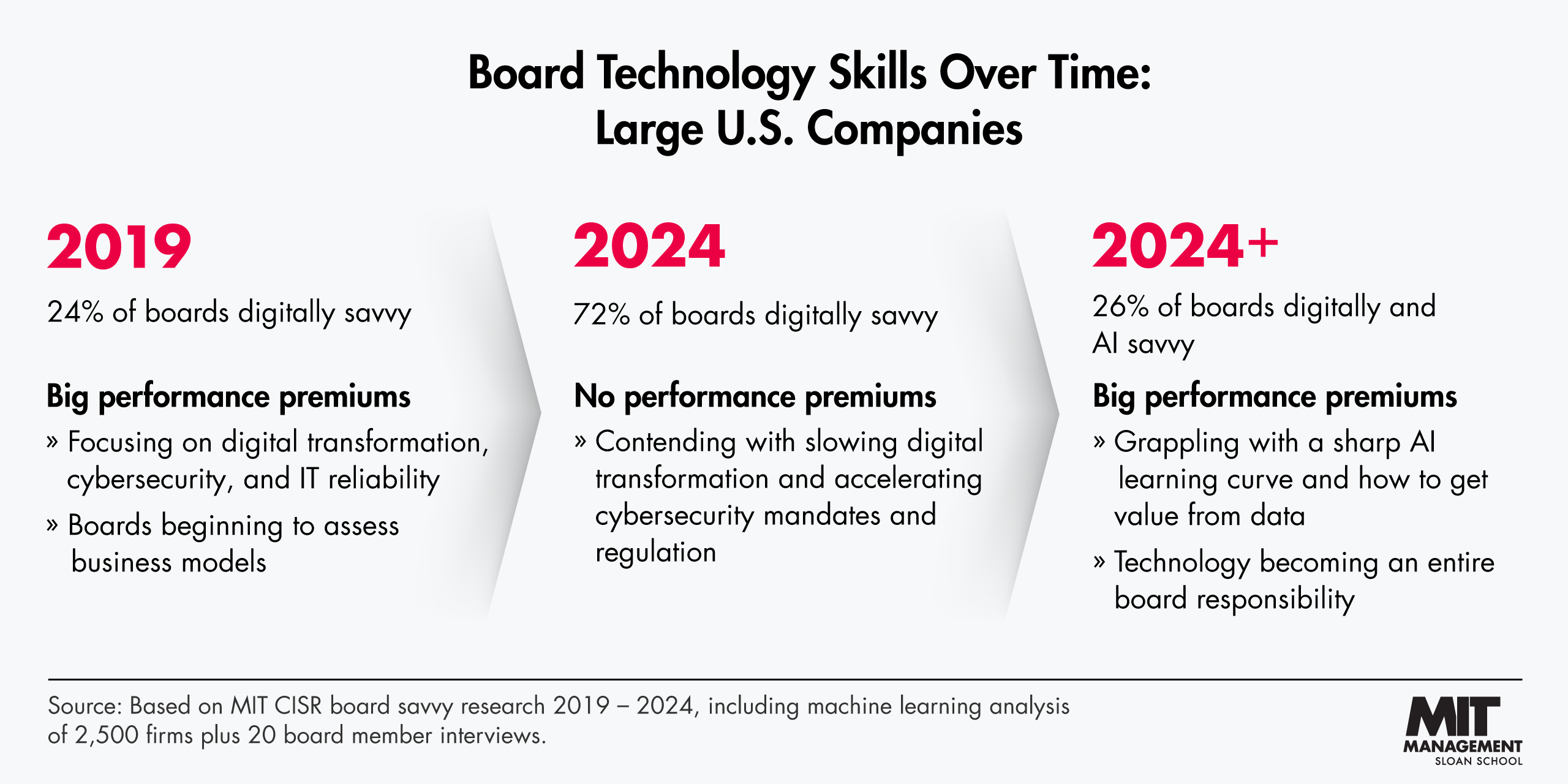Successful companies have Digital and AI-savvy boards

According to MIT, corporate boards that are savvy about artificial intelligence (AI) now play a crucial role in helping companies outperform their peers. In 2019, having a digitally savvy board was a competitive advantage, with digitally savvy boards found in about 24% of large U.S. companies and associated with roughly 30% better performance metrics, including market cap growth. However, by 2024, digitally savvy boards became common across 72% of companies and no longer served as a performance differentiator on their own.
Instead, the new critical factor is having boards that are both digitally and AI savvy — about 26% of boards meet this combined standard, and these boards correlate with significantly higher company performance, such as a return on equity 10.9 percentage points above the industry average.
For boards and executives to keep pace with fast-moving technologies, boards need:
- Education: Use external speakers, technology demos, and education programs with partners like universities and startups.
- Prioritization: Make time for important technology discussions focused on why changes are necessary.
- Focus: Establish technology committees to systematically address technology’s strategic role.
Digital savviness is an understanding developed through experience and education about how emerging technologies impact business success over the coming decade, and a digitally savvy board as one that includes at least three such directors.
This digital savvy extends across three key board roles:
- Strategy: Understanding and acting on digital opportunities and threats to a company’s business model.
- Oversight: Monitoring progress and spending on major digital initiatives.
- Defense: Ensuring cybersecurity, data privacy, and compliance.T
To assess organisations level of digital savy, MIT applied machine learning to analyse board member bios and also interviewed board directors. They observed changes in board-level technology discussions between 2019 and 2024. Initially, the focus was on digital business transformation, cybersecurity, and IT reliability, with only 8% of companies having technology committees. By 2024, conversations shifted towards cybersecurity regulations, the slowing of digital transformation, and digital product sales, with the number of boards having technology committees nearly doubling to 15%. Presenters to boards expanded beyond CIOs and CISOs to include other tech and business leaders.
The MIT research highlights that boards combining digital and AI expertise tend to have dedicated committees on cybersecurity, talent, and digital products, emphasising the strategic importance of technology. Interviews with directors suggest that having dedicated technology committees helps focus board attention on technology's role in strategy.
As mentioned, digital savvy extends across Strategy, Oversight and Defense. It is not sufficient to have only one or two digitally knowledgeable directors; a critical mass of at least three is necessary to effect change and drive superior company performance. One tech-savvy director alone may feel isolated and unable to influence the board effectively. To build this critical mass and enhance board digital savvy, companies should take five practical steps:
- Create a common language and decision-making framework for digital discussions to avoid confusion and align understanding among board members from diverse backgrounds.
- Treat digital strategies as core business strategies, integrating them into the company culture and executive discussions through educational sessions, external expert engagements, and immersive experiences.
- Develop real-time dashboards that track digital investments, progress, and impact metrics, facilitating efficient, data-driven board oversight.
- Showcase digital talent and initiatives in board meetings through demos and direct interaction with digitally savvy executives rather than relying solely on slide presentations.
- Engage executive committees early and coordinate digital strategy across the company to avoid surprises and promote aligned, enterprise-wide digital transformation efforts.


